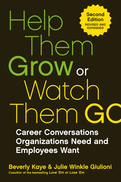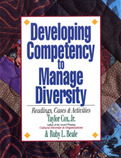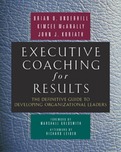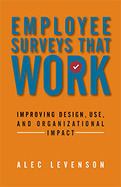Study after study confirms that career development is the single most powerful tool managers have for driving retention, engagement, productivity, and results. But most managers feel like they just don't have time for more meetings. This book offers a better way: frequent, short conversations with employees about their career goals that can be integrated seamlessly into the normal course of business.
Beverly Kaye and Julie Winkle Giulioni identify three broad types of conversations that will increase employees' awareness of their strengths, weaknesses, and interests; point out where their organization and their industry are headed; and help them pull all of that together to design their personalized career plans. And the new chapter includes an assessment so you can measure how well your current culture supports employee development—and how to improve it.
Recognizing that "managing" diversity has become a critical skill in organizations all over the world, Developing Competency to Manage Diversity shows how the dynamics of diversity affect people on all levels of society and in all kinds of organizations-from individual relationships to community interactions, from city and national governments to work teams and product markets.
Defining diversity as "a mix of people in one social system who have distinctly different, socially relevant, group identities," this volume responds to the increasing need to function effectively in workplace contexts that are culturally, socially, economically, and racially diverse. To this end, it provides managers with tools they need to successfully manage a diverse workforce. Chapters provide specific tasks and activities to:
o Increase awareness of coworkers' cultural backgrounds
o Create a "pro-diversity" organizational climate
o Develop an operational definition of diversity
o Explore how group identity applies to each group member
o Investigate differences of cognitive style
o Customize team-building strategies for diverse groups
Organized in an easy-to-follow, step-by-step format, a set of twenty-three readings, six case studies, and thirty-one activities takes readers through a three-stage learning process. The first stage creates awareness of a diversity-related issue, the second stage develops knowledge and understanding of effective ways to handle that issue, and the final stage outlines practical actions to respond to the issue. The high costs of failing to recognize and manage diversity-absenteeism, dissatisfaction, barriers to contribution, harassment, discrimination suits, reduced efficiency, and lack of communication-as well as the potential to leverage diversity as an organizational resource-should motivate organizations and groups to make full use of Developing Competency to Manage Diversity.
- Provides a comprehensive picture of participation as the system of governance we need to meet the workplace challenges of today, and tomorrow
- Describes what executives, managers, workers, labor unions, customers, and suppliers can do as part of a participative enterprise
- Argues that participative governance is a major issue of our times, affecting all areas of our lives: education, business, government, families, and community organizations
Human Resource Development is a large field of practice but a relatively young academic discipline. For the last two decades, Foundations of Human Resource Development has fulfilled the field's need for a complete and thoughtful foundational text. This essential text provides an up-to-date overview of the HRD profession, along with the terminology and processes required for sound HRD research and practice. Readers will gain a basic understanding of
• HRD models and theories that support best practice
• History and philosophical foundations of the field
• HRD's role in learning, performance, and change in organizations
This new edition has been updated throughout and contains new chapters on assessment, technology, globalization, and future challenges. Examples of best practices are included, along with variations in core thinking, processes, interventions, tools, and much more. This must-have reference will help both practitioners and academics add clarity to their professional journeys.
Executive Coaching for Results helps this critical leadership development method come of age. This is not a “how-to-coach book”—there are already plenty of those—but rather a comprehensive guide on how to strategically use coaching to maximize development of talent and link the impact of coaching to bottom-line results. Underhill, McAnally, and Koriath draw on their rigorous original research (through Executive Development Associates) with Fortune 1000 and Global 500 companies such as Disney, IBM, UBS, Unilever and many others,
and combine that with their years of industry experience to advance the state of the art.
Executive Coaching for Results includes topics such as:
Integrating coaching into your organization's overall leadership development strategy
Locating and screening coaches worldwide
Developing an internal coaching program
Deciding which coaching assessments and instruments are appropriate to your situation
Measuring the impact and ROI of coaching
Following up after coaching
Throughout, the authors provide numerous examples from major organizations such as Dell, Johnson and Johnson, Intel, and Wal-Mart. Offering practical learning, best practices, and illuminating case studies, this is the first definitive guide to the effective use of executive coaching in the corporate environment.
•The first comprehensive guide to using executive coaching in
organizations
• Based on the authors’ rigorous original research with dozens of leading companies
•Includes extensive case studies, examples of coaching tools, advice on measuring ROI, and much more
* Offers practical guidance for designing employee surveys that yield useful results
* Explains the hidden pitfalls in many popular survey practices
* Written by a rising HR analytics thought leader
Most employees like company surveys (A) Very much, (B) So-so, (C) Not so much, or (D) Not at all. For most, the answer is D. And the same is often true for the executives who have to figure out how to apply the results.
But that's because so many employee surveys are poorly designed, says Alec Levenson. Employees with very different work functions are given the same set of questions, even though their experiences and concerns are wildly divergent. Surveys try to cover too many different kinds of issues at one time, resulting in either a bland set of questions or a survey that goes on forever. Questions are asked without a clear sense of how the answers will help improve the business, the reason for the survey isn't clear to the participants, and employees never see anything done with the results.
Employee Surveys That Work offers sensible, practical ways to make employee surveys more useful, accurate, and effective and counters a number of unhelpful but common practices that have arisen as employee surveys have become commonplace. Levenson provides specific advice for ensuring that the purpose and desired outcomes of surveys are clear, the questions are designed to provide the most relevant and accurate data, and the results are actionable. He looks at a wealth of specific issues, such as the best benchmarking practices, the benefits of multivariate modeling for analyzing results, linking survey data with performance data, how best to measure employee engagement, the pros and cons of respondent anonymity, and much more.
Employee surveys serve an indisputable role in providing a way to measure key organizational processes based on information from the people most informed about those processes-the employees who work with and implement them on a daily basis. But a lot can be done to design, implement, and act on surveys in more meaningful and productive ways. This book provides a road map for doing so.
• By the coauthor of Thomas-Kilmann Conflict Mode Instrument (6 million copies sold)
• Accessible, practical, and based on solid research, this book reveals how and why today's workplace requires more self-management, and why intrinsic motivation is now essential
• Details four intrinsic rewards that make work energizing and fulfilling
What motivates people to do their best work in any endeavor they undertake? Management theory and practice has traditionally focused on elements that Kenneth Thomas calls 'extrinsic motivators': pay, benefits, status, bonuses, commissions, pension plans, expense budgets, and the like. While these are powerful motivators, particularly in command/control job situations where workers have little or no say in how the job is managed, by themselves they are no longer enough. In today's organizations, where managers expect workers and teams to self-manage their work, intrinsic rewards are essential.
This breakthrough book provides the first comprehensive treatment of intrinsic motivation in the workplace-the psychological rewards workers get directly from the work itself-offering clear advice on how companies can harness its tremendous power to develop a more committed, self-managing workforce. Written in an engaging, accessible style and grounded in solid academic research, the book provides a diagnostic framework for addressing problems of intrinsic motivation and essential ways to build it.
Thomas describes four intrinsic rewards needed to energize today's employees:
• A sense of purpose or meaningfulness
• The ability to choose how the tasks are performed
• A sense of competence from performing work activities well, and
• A sense of progress.
Thomas offers detailed information on these rewards, together with the building blocks leaders and workers can use to create them. Finally, he spells out the practical implications for executives, managers, and employees themselves.
Intrinsic Motivation at Work makes a major contribution to the topic of work motivation-one that is based on a keen understanding of the changing requirements of today's workplace and the limitations of other motivational models. The paradigm and practical approaches this path-breaking book provides will help business leaders build motivation at every level of their organizations.
Ken is also the co-author of the new assessment, the Work Engagement Profile, which measures four intrinsic rewards that fuel employee engagement in the workplace, as discussed in Intrinsic Motivation at Work. The WEP is published by CPP, Inc.

























